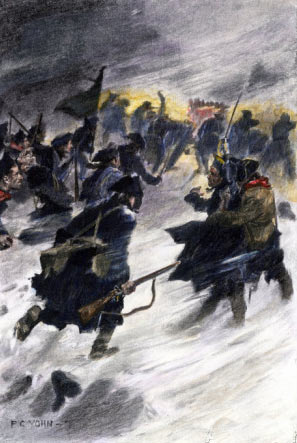The unsuccessful American invasion of Canada and attack on Quebec on 31st December 1775
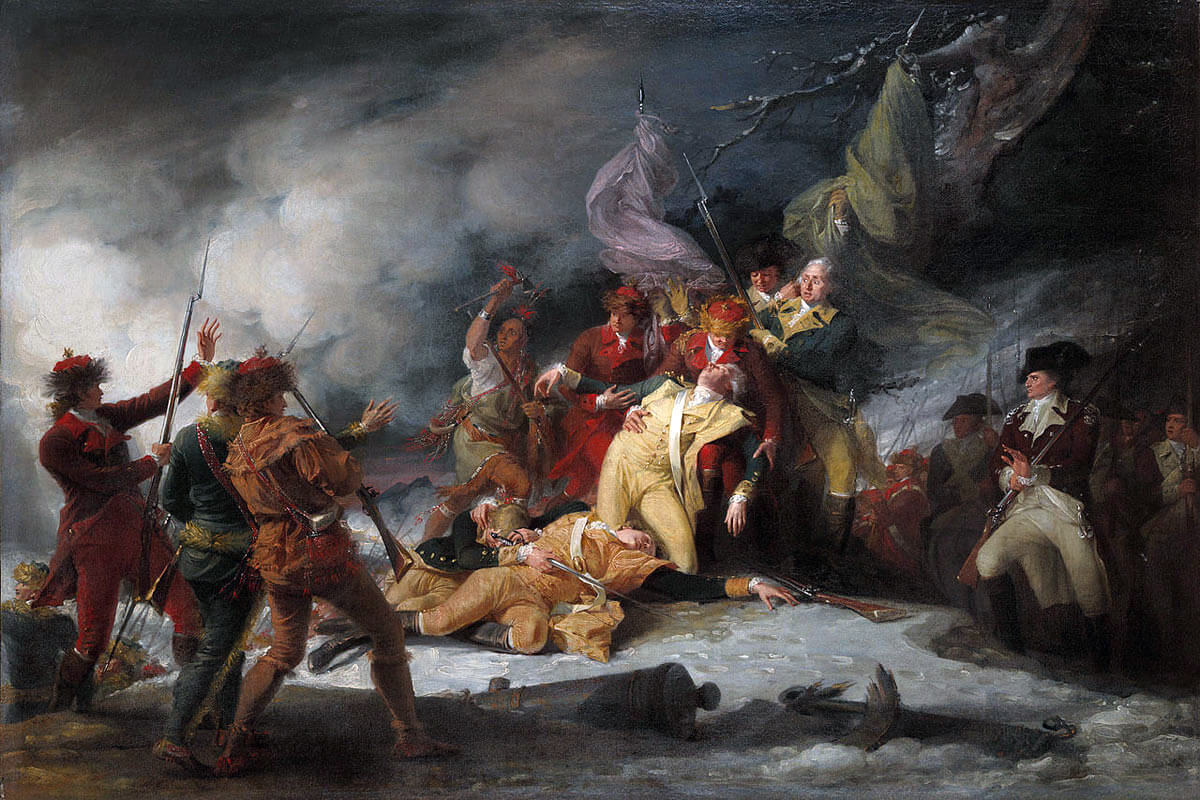
Death of General Richard Montgomery in the attack on Quebec on 31st December 1775 in the American Revolutionary War: picture by John Trumbull
The previous battle of the American Revolutionary War is the Battle of Bunker Hill
The next battle of the American Revolutionary War is the Battle of Sullivan’s Island
To the American Revolutionary War index
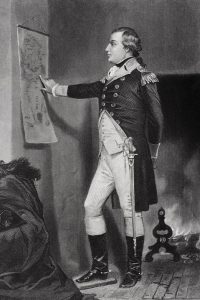
Major-General Richard Montgomery: Battle of Quebec on 31st December 1775 in the American Revolutionary War: picture by Alonzo Chapell
Battle: Quebec 1775
War: American Revolution
Date of the Battle of Quebec 1775: 31st December 1775
Place of the Battle of Quebec 1775: Quebec in Canada.
Combatants at the Battle of Quebec 1775: American troops attacked a force comprised of British recruits and French Canadian militia and volunteers.
Generals at the Battle of Quebec 1775: The Governor of Canada, Guy Carleton, and Colonel Allen Maclean commanded the British forces.
Major General Benedict Arnold and Brigadier Richard Montgomery commanded the American troops. Montgomery was a half pay British officer.
Size of the armies at the Battle of Quebec 1775: There were round 1,200 troops on each side.
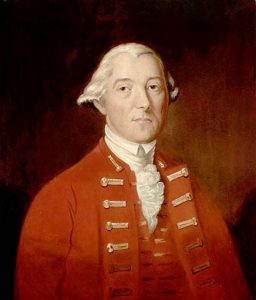
Guy Carleton, British Governor of Canada: Battle of Quebec on 31st December 1775 in the American Revolutionary War
Uniforms, arms and equipment at the Battle of Quebec 1775: Each side wore whatever clothing was available to them, other than the small party of British recruits who may have been in uniform. Weapons were muskets and bayonets. The British had the benefit of the heavy guns on the city’s fortifications.
Winner of the Battle of Quebec 1775: The British and French-Canadian garrison drove off the American attack and ended the threat to the British control of Canada.
British Regiments at the Battle of Quebec 1775: It is unknown which regiments were represented in the garrison.
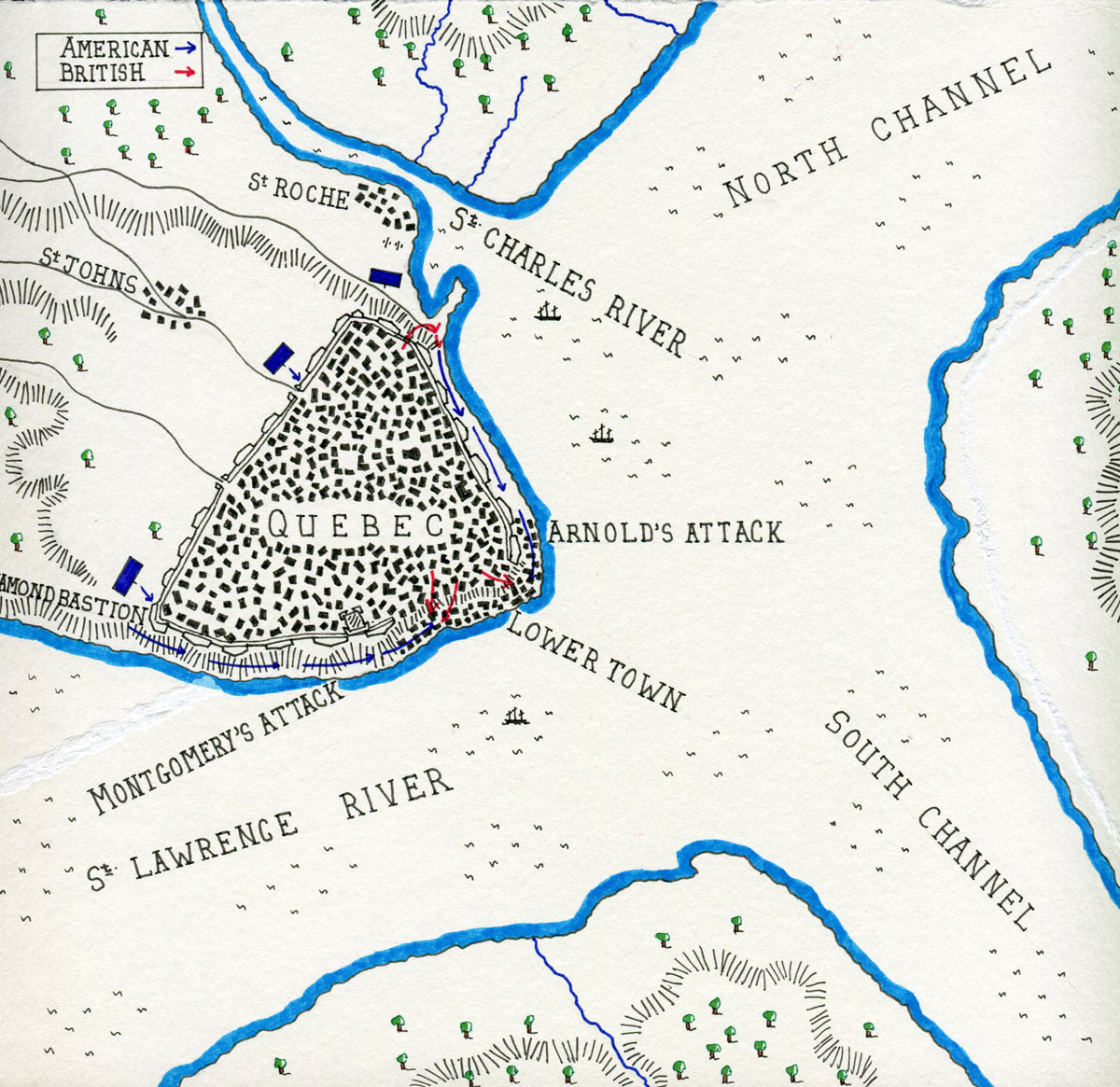
Map of the Battle of Quebec on 31st December 1775 in the American Revolutionary War: map by John Fawkes
Account of the Battle of Quebec 1775: While General Washington, with the American Continental Army, was blockading the British garrison in Boston, Brigadier Montgomery led an American attack up the Lake Champlain route into Canada and General Arnold took his American force across country through Maine. The purpose of the invasion of Canada was to bring the French-Canadian population into the war on the American side, to take control of the sea route from Britain to the St Lawrence River and to drive the British out of Canada.
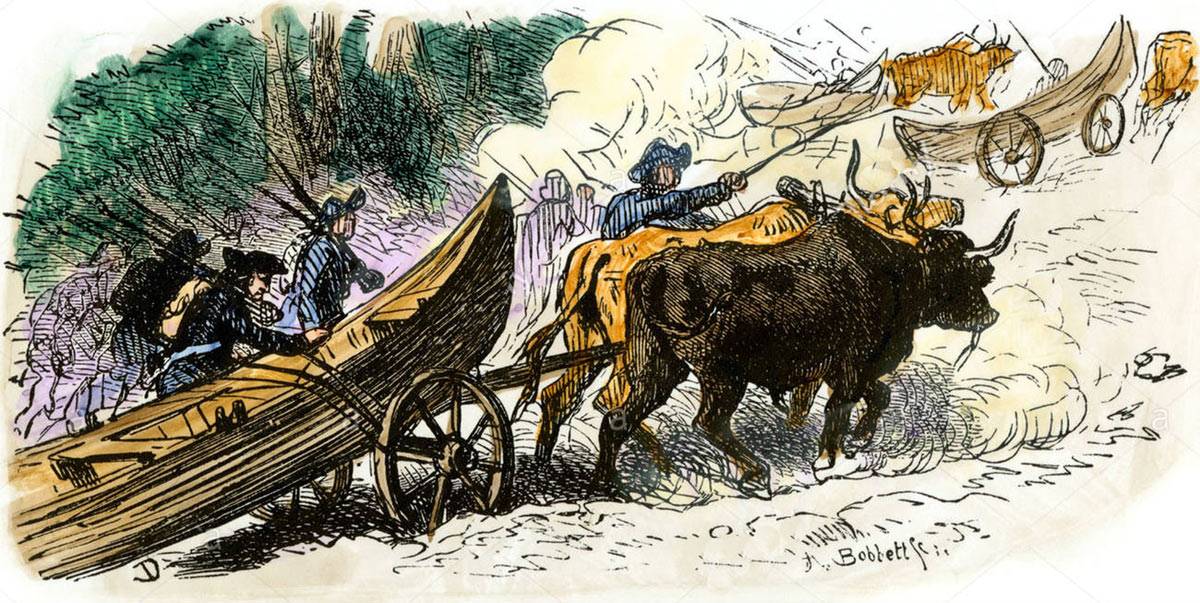
American colonists under Major-General Benedict Arnold advancing through Maine: Battle of Quebec on 31st December 1775 in the American Revolutionary War
The Americans captured Fort St John and Montreal. In late October 1775, Arnold arrived on Point Levis across the St Lawrence from Quebec, having lost a substantial part of his force on the punishing journey from New England.
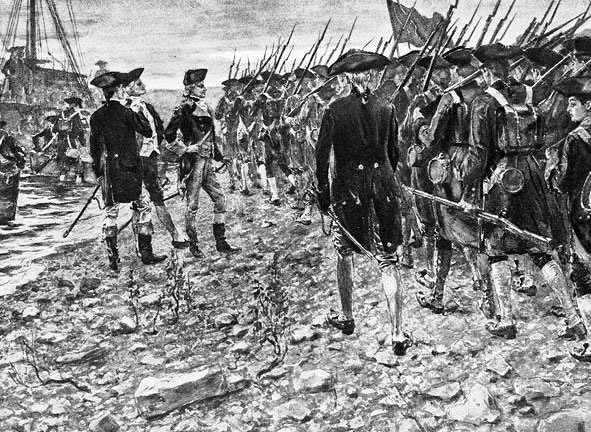
American troops advancing into Canada: Battle of Quebec on 31st December 1775 in the American Revolutionary War
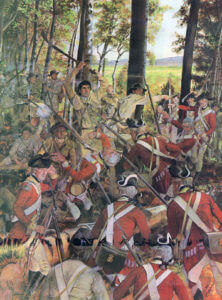
Fighting at Montreal in September 1775: Battle of Quebec on 31st December 1775 in the American Revolutionary War
The Americans under Arnold underestimated the distances they would be forced to travel and ran out of supplies. They were forced to eat their shoes and equipment and many died.The British officer, Colonel Maclean, hearing of Arnold’s march on Quebec, force marched his recruits from Sorel to Quebec, being joined later by Carleton.
On 13th November 1775, Arnold took his force across the St Lawrence to the north bank, climbed onto the Plains of Abraham, and summoned the garrison to surrender or come out and fight. The garrison did neither. Arnold launched a night attack that was beaten back.
On 31st December 1775, with the addition of Montgomery’s troops, and in a snowstorm, Arnold launched night attacks at either end of the city.
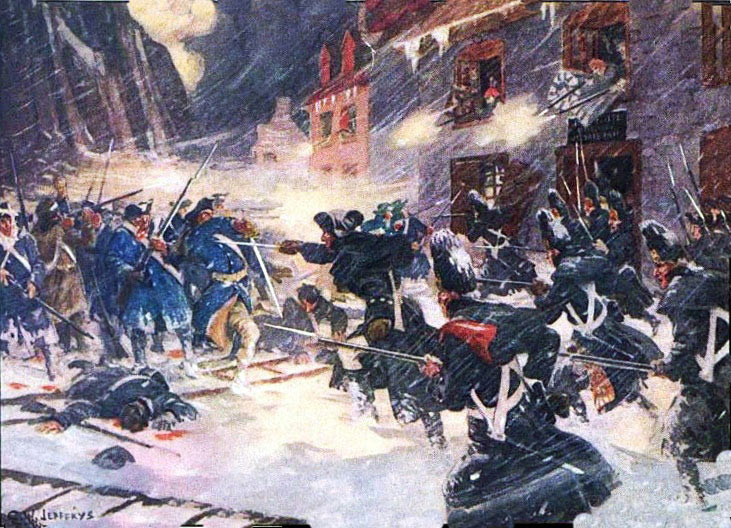
Street fighting between the British and French-Canadians and the American attackers: Battle of Quebec on 31st December 1775 in the American Revolutionary War
Arnold led the assault along the north-east side of Quebec, while Montgomery’s troops attacked along the southern shore.
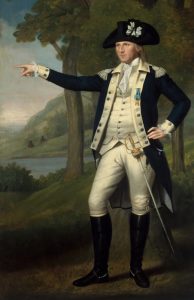
Marinus Willet, lieutenant-colonel of the 3rd New York Regiment: Battle of Quebec on 31st December 1775 in the American Revolutionary War
The garrison was alerted by premature feint attacks on other parts of the city perimeter. Montgomery’s assault was repelled with heavy grapeshot from the cannon on the city walls and Montgomery was killed.
Arnold’s attack penetrated the city wall but he was wounded. Maclean arrived from dealing with Montgomery’s assault and led a counter attack. The American troops who had penetrated the walls were captured and the assault was driven off.
Casualties at the Battle of Quebec 1775: British and Canadian losses were 20. The American losses were around 500.
Follow-up to the Battle of Quebec 1775: Following the battle, the Americans withdrew from Canada and no further serious attempt to bring the Canadian population into the war on the American side was made.
Governor Guy Carleton pursued the retreating Americans down the Lake Champlain route forcing the Americans to abandon their ships and boats and continue south overland.
Anecdotes from the Battle of Quebec 1775:
-
Major-General Richard Montgomery, killed during the American attack on Quebec on 31st December 1775, was a half-pay British officer. Montgomery first went to America in 1757, as an officer in the British 17th He fought at the Siege of Louisburg in 1758. In 1762, Montgomery, with the 17th Foot, took part in the attack on Fort Moro during the capture of Havana. On the return of the 17th Foot to New York, Montgomery served in the War of Pontiac’s Conspiracy in 1764. After the war, Montgomery went to England with his regiment. In 1772, Montgomery left the British army and returned to New York Colony, intending to farm, and married. On the outbreak of the American Revolutionary War in 1775, Montgomery was appointed brigadier in the new American Continental Army and placed in command of the attack on British Canada. By the time of his death in the attack on Quebec on 31st December 1775, Montgomery had been promoted major-general in the American Continental Army. The death of General Montgomery was the subject of one of John Trumbull’s paintings of the American Revolutionary War (see above).
- Major-General Benedict Arnold was a fiery military leader, inspirational in action but unreliable in character. Arnold led his troops on the difficult journey across the Maine back-country, running out of supplies on the way. His attack on Quebec was beaten back after the death of Montgomery and the release of MacDonald’s British troops to join the garrison fighting Arnold’s force. After playing a major role in the defeat of the British General Burgoyne at Saratoga, Arnold was appointed the military commander in Philadelphia. Arnold there married a loyalist woman and began corresponding with the British. In 1780, Arnold was appointed to command the fortified post at West Point. Arnold’s treachery in intending to deliver the post was discovered and he fled to the British. His British contact, Major Andre, was hanged as a spy. After the Revolutionary War, Arnold lived in England, Canada and the West Indies. He was heavily criticised by British officers for his treachery during the American Revolutionary War and is reputed to have fought two duels in England.
- One of Montgomery’s officers in the attack on Quebec was Daniel Morgan. Morgan was captured by the British. On his exchange, Morgan found he had been promoted colonel. He was required to re-raise his regiment of Virginian riflemen. Morgan went on to command the American army at the highly successful Battle of Cowpens.
References for the Battle of Quebec 1775:
- History of the British Army by Sir John Fortescue
- The War of the Revolution by Christopher Ward
The previous battle of the American Revolutionary War is the Battle of Bunker Hill
The next battle of the American Revolutionary War is the Battle of Sullivan’s Island
To the American Revolutionary War index
